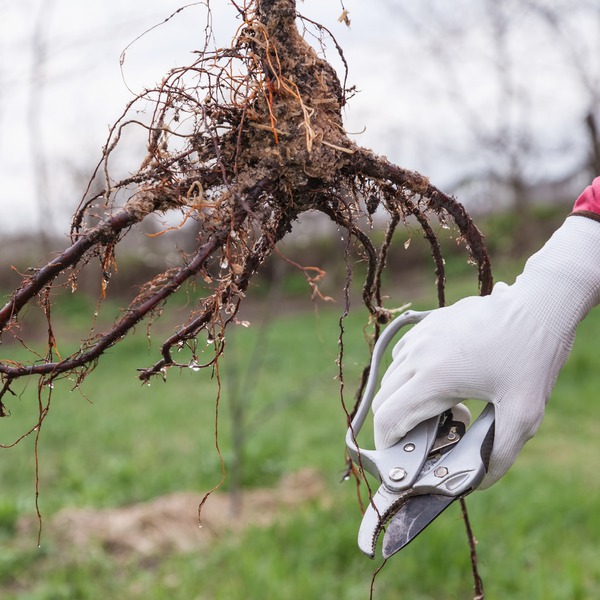If you’ve ever watched a tree struggle with limited space, growing around sidewalks or other obstacles, you may have wondered how professionals keep trees healthy under tough circumstances. Root pruning can be the answer, but it isn’t as simple as just cutting roots at random. In this article, we’ll break down the best practices for root pruning, so you feel confident keeping your trees strong and vibrant for years to come.
Why Trees May Need Root Pruning
Most gardeners and homeowners focus on the branches and foliage when caring for their trees. However, what’s beneath the soil is just as important. Roots spread far and wide, searching for nutrients, water, and support. In urban or suburban environments, these roots can outgrow their boundaries, endanger structures, or face compaction due to construction. Root pruning helps to:
-
Prepare trees for transplanting by reducing shock
-
Encourage the growth of new feeder roots
-
Protect sidewalks, driveways, and foundations from root invasion
-
Improve the health of pot-bound or containerized trees
Choosing the Right Time for Root Pruning
Timing is critical for successful root pruning. Most experts recommend root pruning during the dormant season, usually in late fall or early spring, when the tree’s metabolic rate is lower. Pruning at this time reduces the risk of shock and enables the tree to recover before the active growth season. Avoid root pruning during extreme heat, drought, or periods of active new foliage, as the tree’s energy demands are much higher during these times.
Assessing Tree Species and Age
Before pulling out your tools, consider your tree’s species and age. Younger trees generally bounce back from root pruning more quickly, whereas mature or slow-growing species can take much longer to recover. Know your tree’s preferences and tolerances—some are sensitive to root disturbance. If you’re unsure, consult a local arborist or extension office to understand what your tree can handle.
Best Tools for Root Pruning
Setting yourself up with the right equipment makes root pruning easier, cleaner, and safer for the tree. A sharp, disinfected spade, root pruner, or saw is usually enough for small jobs. More substantial tools may be required for large trees or extensive root systems. Disinfect your tools before and after each use to prevent the spread of disease. When cutting roots, precision is key—jagged or crushed cuts can set your tree back, making a clean, straight slice the ideal goal.
Main Tools for the Job
-
A spade or a flat shovel for digging
-
Hand pruners or loppers for smaller roots
-
Root saw for larger roots
-
Tarp for collecting debris
-
Disinfectant solution for tools
Locating and Marking the Roots
Root pruning is not a guessing game. Locating the main roots you intend to cut helps protect the tree’s stability and keeps essential root systems intact. Use a tape measure to create a circle around the tree, keeping your cuts at least five to seven times the trunk’s diameter away from the trunk. For example, if the trunk is 12 inches wide, aim for your pruning cuts to be at least 60-84 inches from the base. Mark your route with flags or spray paint so you know where to dig.
How to Identify Important Roots
-
Surface roots vs. structural roots: Focus on non-essential surface roots.
-
Feeder roots are small and fine; avoid cutting too many.
-
Avoid cutting roots larger than two inches if possible.
-
If you hit a particularly large root, reconsider the location of your cut.
Step-by-Step Guide to Root Pruning
-
Dig a Trench: Use your spade to dig a shallow, narrow trench along your marked line, exposing the roots without disturbing the soil near the trunk.
-
Identify Roots for Cutting: Clean soil away from the roots you plan to cut, so you can see them clearly and avoid messy cuts.
-
Make Clean Cuts: Use sharp hand pruners or a root saw to cut the roots cleanly. Avoid twisting, crushing, or breaking roots by hand.
-
Do Not Over-Prune: Limit how many roots are cut in one session. Removing more than 25 percent of a tree’s roots can be deadly.
-
Backfill the Trench: Replace the soil promptly and water thoroughly to help the tree recover.
-
Mulch: To conserve moisture and regulate soil temperature, add a two—to four-inch layer of organic mulch above the pruning zone.
Recovery Care After Root Pruning
Supporting your tree after root pruning is just as crucial as making clean cuts. The following steps help trees rebound and regain vigor:
-
Water deeply and consistently, especially during dry spells
-
Avoid fertilizing immediately after root pruning, as this can stress the tree further
-
Apply mulch, but keep it five inches away from the trunk to prevent rot
-
Monitor leaves and branches for signs of stress, such as wilting, yellowing, or early leaf drop
Common Mistakes to Avoid
Small missteps can have lasting consequences for your tree’s health. Avoid the following common errors:
-
Pruning roots too close to the trunk, risking stability and nutrient uptake
-
Removing large roots or too many roots at once
-
Failing to disinfect tools between trees
-
Ignoring warning signs of stress or declining health, like sparse leaves
Environmental Considerations and Long-Term Planning
Think about the bigger picture before root pruning your tree. Will construction or landscaping changes happen in the next few years? Anticipate how these changes could affect your tree’s root zone. Plan root pruning at least a year before any major transplanting or construction to give trees time to heal and adapt. A thoughtful approach reduces risk and supports the tree’s survival.
Long-Term Benefits of Proper Root Pruning
-
Enhanced root structure with more compact, healthy feeder roots
-
Reduced risk of transplant shock during moves
-
Safer integration in built environments
-
Stronger, more resilient trees with deeper anchorage
Pruning in Confined Urban Spaces
Urban trees are often boxed in by pavement, buildings, and underground utilities, so root pruning must be even more calculated. Before digging, communicate closely with utility companies. Consider creative options for root pruning, such as air spading, a technique that uses compressed air to gently expose roots without damaging them. In areas where roots pose safety or infrastructure problems, a tree chipper can efficiently process removed branches and roots, keeping the site clean and safe while minimizing disruption.
Integrating Proper Root Pruning with Other Treatments
Combining root pruning with other care techniques can improve overall results. For example, while you might not need chemical treatments every time, some situations call for supplementary care. In the case of disease or pest invasion, a micro-injection treatment can target vital nutrients or pest controls directly into the tree’s vascular system, reducing recovery time after root pruning and boosting resilience against future threats.
Evaluating the Success of Your Pruning
Knowing whether your root pruning project was successful comes down to ongoing observation. Healthy new leaves, a vibrant canopy, and the absence of dieback are all good indicators. Watch closely during the growing season following pruning, as this is when problems or triumphs become visible. If the tree seems stressed or struggles to put out new growth, consult a professional arborist for the next steps.
Checklist for Checking Tree Health
-
Look for new growth and leaf color
-
Check for wilting, yellowing, or early leaf loss
-
Monitor for pests or fungal growth at pruning sites
-
Test soil moisture and make sure the root zone is well-hydrated
Blending Root Pruning with Routine Maintenance
Consistency in care is your biggest ally. Pairing proper root pruning practices with regular watering, mulching, and disease monitoring builds a solid foundation for long-term tree health. These practices work together to give your tree what it needs beneath and above the soil, resulting in a more resilient specimen that withstands stress and thrives in its location.
Final Thoughts
Root pruning is a valuable technique for promoting tree health, especially in challenging urban or confined environments. By following best practices—such as careful planning, proper timing, and clean cutting—you significantly reduce the risks of shock and decline. Always consider your tree’s species, age, and overall environment before starting, and provide thorough aftercare to support recovery. Combining root pruning with consistent maintenance ensures your trees remain stable, vibrant, and resilient for years. Thoughtful, precise root pruning truly secures both your tree’s health and the safety of its surroundings.




